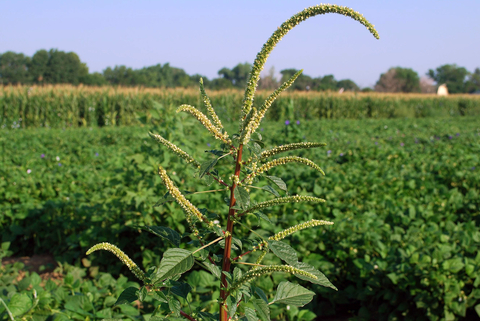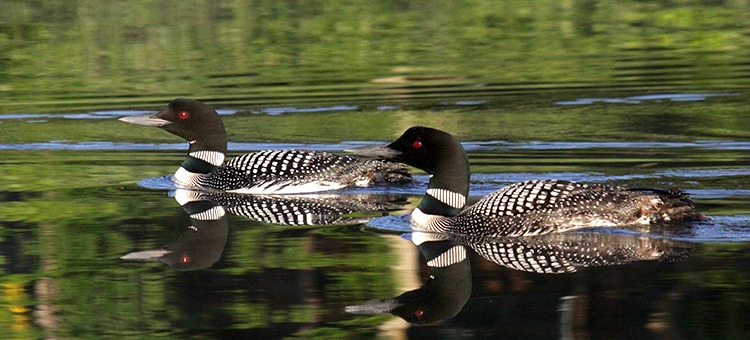
Palmer amaranth is listed as a Prohibited Noxious Weed on the Eradicate List. (Photo/ Howard F. Schwartz, Bugwood.org)
Gov. Walz Signs Ag Omnibus Bill into Law
St. Paul, MN: Governor Walz has signed Chapter 34, House File 2446, the Agriculture and Broadband Development Policy and Finance Bill, into law. The bill funds the Minnesota Department of Agriculture (MDA), Minnesota Board of Animal Health, and the Agricultural Utilization Research Institute.
“We worked closely with lawmakers throughout the session to craft a bill that invests in Minnesota agriculture and our farmers and ranchers,” said Agriculture Commissioner Thom Petersen. “The bill also provides food to those in need, supports mental health and farm safety resources, and protects our natural resources. It is a major win for our ag community and sets us all up for success now and into the future.”
Highlights of the bill include a new state level Local Food Purchasing Assistance (LFPA) Program ($700,000 per year, Fiscal Years 2026-2029 (FY26-29)). This fills in for a federal LFPA program that was terminated in March. The program has been widely successful in helping emerging farmers build markets and providing healthy and culturally appropriate food to food shelves around the state.
The bill also increases funding to the Farm to School and Early Care Program (an additional $550,000 for a total of $1.594 million in FY26 and $1.544 million in FY27). A federal award for the Local Food for Schools program was also terminated in March. This funding will help offset that loss of federal funds.
There is a onetime increase of $1.5 million in funding to the Ag Emergency Account in FY26. The account helps the state respond to agricultural disasters and animal diseases like avian influenza. New funding is also available for the Protect Grants, specifically for avian influenza ($400,000 in FY26/27).
The AGRI Meat, Poultry, Egg, and Milk Processing Grant will see an additional $100,000 for a total of $600,000 in FY26/27. This grant helps with the start-up, modernization, or expansion of meat, poultry, egg, and milk processing businesses. Processing bottlenecks in the wake of the pandemic highlighted the need for this support in the food supply chain.
The ag bill increases funding to the Farm Down Payment Assistance Program (an additional $500,000 for a total of $2.5 million in FY26/27). This grant helps qualified farmers purchase their first farm. The amount of each award will also increase from $15,000 to $20,000 per grantee.
Volunteers needed for DNR loon survey
The Minnesota Department of Natural Resources (DNR) is seeking volunteers to help monitor the loon population in Aitkin, Becker, Cook, Crow Wing, Itasca, Kandiyohi, Lake, and Otter Tail counties. Volunteers are needed for a minimum of one morning during the July 4 through July 14 monitoring period, to count the number of adult and juvenile loons on pre-selected lakes.
With the assistance of hundreds of volunteer observers, the DNR has gathered information for more than 30 years about common loon numbers on more than 600 lakes across six regions, or “index areas,” throughout the state.
“The Minnesota Loon Monitoring Program is a success due to hundreds of volunteers who conduct surveys annually,” DNR Nongame Wildlife Specialist Gaea Crozier said. “The data collected allow us to track changes in the loon population over time and identify potential management needs and opportunities on Minnesota lakes.”
Volunteers can choose one or more lakes on which to count the number of adult and juvenile loons. They will then report these observations to the DNR for data analysis.
Volunteers are especially needed in Otter Tail County, with 49 lakes available, and Kandiyohi County, with 48. There are 21 lakes available in Becker County, 18 in Cook and Lake counties, 15 in Itasca County, and 10 in Aitkin and Crow Wing counties.
The time commitment is one to four hours per lake. Each lake’s survey must be done between 5 a.m. and noon on a single day of the volunteer’s choosing, within the July 4-14 date range.
To sign up as a survey volunteer and select a lake, go to the DNR’s loon monitoring program webpage (mndnr.gov/eco/nongame/projects/mlmp_state.html) and click on “Volunteer Map.” Select an available lake, add it to the volunteer cart and sign up to become a loon surveyor.
Questions about Becker or Otter Tail County lakes should go to Kristie Brezina, kristie.brezina@state.mn.us, 218-671-7977.
June Weed of the Month: Report a Pest Success Story for Noxious Weeds
Early detection is essential to keeping noxious weed species out of Minnesota
By Maya Sarkar, Minnesota Department of Agriculture – It’s important to treat new infestations of invasive species as they arise. Treating infestations early limits their spread and saves resources. This method of treatment is called early detection and rapid response (EDRR), which focuses on detecting new invasive species early and treating them as soon as possible to prevent their spread and establishment (for more information, check out The Invasion Curve).
One way to detect species early is through a community science-based approach asking people in our community to report suspicious species when they see them. The Minnesota Department of Agriculture (MDA) does this through Report A Pest, an online form for concerned community members to report potential threats of invasive species, diseases, and insects. In fact, some of these reports resulted in the early detection of and rapid response to invasive plant species on the Noxious Weed List. Here are some of the success stories:
Palmer amaranth: Submissions from Report A Pest have kept our team up to date on the whereabouts of Palmer amaranth. These reports directly helped the MDA quickly treat populations before they could establish. These efforts have kept Palmer amaranth, an invasive species and major threat to agriculture, out of the state. Keep up the good work!


